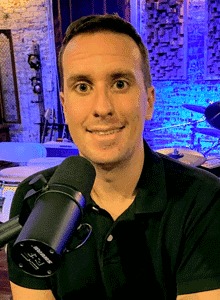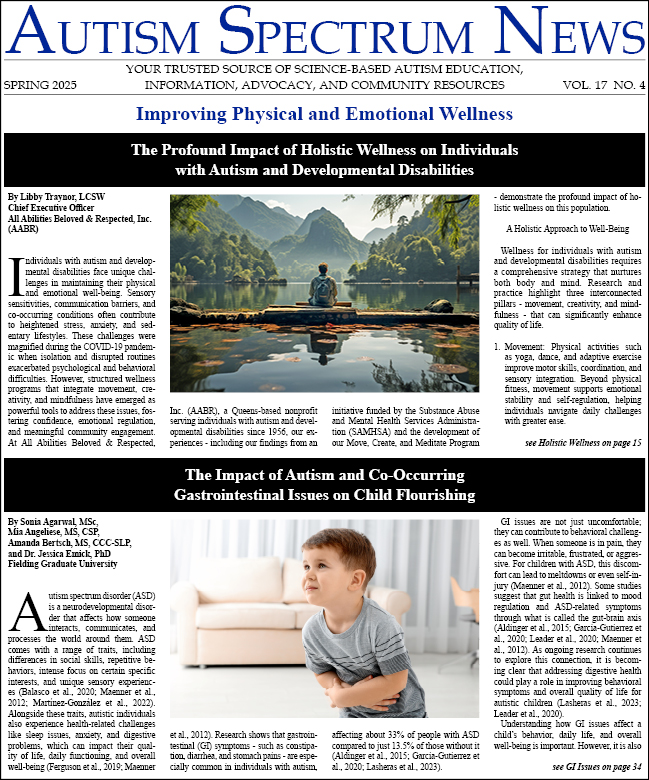Throughout my life as an autistic person, I have been fortunate to have experienced great moments where I have been able to socialize with others and gain long-lasting friendships. There were also times when, due to my misunderstanding of certain social situations and the anxiety that comes with it, this has been very difficult for me and has even led me to feel lonely. Such feelings of loneliness are not uncommon in our community. This loneliness has even led to dire results for our community. The truth of the matter is that we autistics can be social creatures if we are able to socialize on our terms.

Each and every autistic person is different when it comes to how much socialization they want in their life. There are a good number of us who want to thrive socially in our lives. We want to gain such experiences and know that it will be fulfilling for us to be able to feel such an enriching experience. With that said, it must be noted that we socialize differently from our neurotypical peers.
In fact, fellow autistic writer Pete Wharmby wrote in his book Untypical to give pointers to keep in mind when it comes to how we socialize. Some autistics might not be consistent in their interactions with others (Wharmby, 2022). This doesn’t mean that the autistic person doesn’t value a relationship. Friendship is greatly valued, and that friendship works differently for us. There are some of us who rather interact online rather than in person (Wharmby, 2022). This doesn’t mean that the autistic person doesn’t want to meet up with someone. The autistic person might feel less stressed by interacting online. There are also some of us who might mentally tire out at an event for too long and might leave early (Wharmby, 2022). This doesn’t mean that they are not enjoying the company or having a good time. In fact, they might have an amazing time. It could just be the case that the autistic person might be drained from too much social interaction and would need to recharge.
Like I stated before, much of this differs with each autistic individual. However, of all the tips Wharmby makes, I relate to the last one the most. There have been many times when I have gone to social events with friends and enjoyed myself. I would love every minute of it and even become the life of the party. The beau of the ball, if you can say that. However, there are times when I would need to leave early because I might get sensory overload. Nevertheless, I still have a good time and go to more in the future. I just need to recharge my batteries, that’s all.
Many practices have been used to help autistics with socialization. However, one of the methods that have, in a way, been forced upon autistics is the use of masking. Masking, also known as camouflaging, is when an autistic person hides their autistic characteristics in order to assimilate into neurotypical society. This would be used to help them in social situations, such as finding friends and obtaining employment. In theory, this was seen as a way to help autistic individuals socialize. However, it has done more harm than good.
Masking prevents autistics from truly being themselves. They are told to deny the characteristics that make each of them unique. For instance, there are those who have to hide certain interests because neurotypicals might see them as “weird.” Because of this, autistics would mimic how neurotypicals talk, act, and behave, trying to hide how they really feel so that they can act “normal.”
Some autistics could use masking when it comes to their difficulties. For example, an autistic who has great difficulty making eye contact would hide this issue so that he or she would not be seen as strange. This might be seen as a way to ease into a social environment, but the reality of it is that it could cause mental health issues, specifically anxiety.
Anxiety has been shown to be prevalent through masking. According to a British study in 2017, the autistic adults that were interviewed universally felt mentally, physically, and emotionally drained from masking, as well as having a great sense of loneliness (Hull et al., 2017).
This anxiety caused by masking has been shown to be prevalent in autistic women. It was reported that, due to autism in women being highly undiagnosed, the difficulties that many autistic women face are frequently mislabeled or misdiagnosed. This would force them to wear masks to fit in (Bargiela, 2016). Studies have also shown that masking amongst autistic women has a price, with many reporting feeling overwhelmed when hiding a certain characteristic, such as stimming because that stimming helps them with regulating emotions (Hull et al., 2017). Autistic women already have difficulties with being underrepresented; masking just makes it worse.
Fortunately, there have been recent studies to help counteract this. The first is to have a neurodivergence-informed therapeutic approach. This means that clinicians working with autistic clients would see them where they are at and their strengths instead of trying to cure them of their autism (Allen et al., 2024). Self-advocates in the autism community have reported that such an environment is very beneficial (Allen et al., 2024). Clinicians can also help by letting autistic individuals with identifying triggers, creating a safe space for them, as well as practicing self-care. The latter of which would include sensory self-regulation and mindfulness.
It also shows how being part of a neurodivergent community can help with this. Many of these communities have been shown to be online and provide positive emotional responses towards autistic individuals. One study showed that, out of the 64 autistic individuals who took part in a survey regarding online autism communities, 45 reported giving social support, while 51 reported receiving social support (Ingouf, 2021). These aspects can help autistic individuals have confidence in themselves and, therefore, prevent masking.
The bottom line is that we autistics can socialize with others. Many of us have different ways to socialize, which is fine. We need to do it on our own terms and not mask ourselves in the process. We can reach a social goal as long as it is done our way.
Robert Schmus, MSW, LCSW is a Mental Health Therapist and Autistic Self-Advocate.
References
Allen, L.L., Mellon, L.S., Syed, N. et al. Neurodiversity-Affirming Applied Behavior Analysis. Behav Analysis Practice (2024). https://doi.org/10.1007/s40617-024-00918-0
Bargiela, S., Steward, R. & Mandy, W. The Experiences of Late-diagnosed Women with Autism Spectrum Conditions: An Investigation of the Female Autism Phenotype. J Autism Dev Disord 46, 3281–3294 (2016). https://doi.org/10.1007/s10803-016-2872-8
Hull, L., Petrides, K. V., Allison, C., Smith, P., Baron-Cohen, S., Lai, M. C., & Mandy, W. (2017). “Putting on My Best Normal”: Social Camouflaging in Adults with Autism Spectrum Conditions. Journal of autism and developmental disorders, 47(8), 2519–2534. https://doi.org/10.1007/s10803-017-3166-5
Ingouf, Laura, “Neurodiversity and Online Communities: Why They Matter” (2021). Honors Theses. 126. https://scholarsjunction.msstate.edu/honorstheses/126
Wharmby, P. (2022). Untypical. HarperCollins Publishers.




